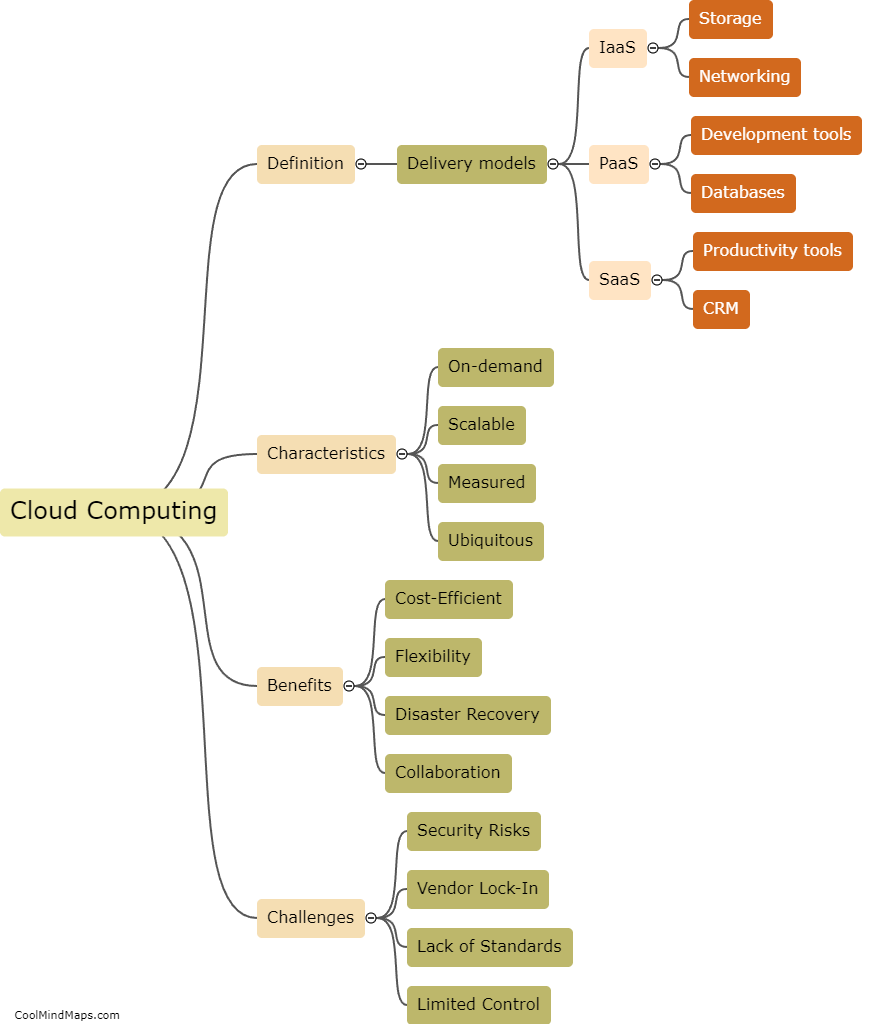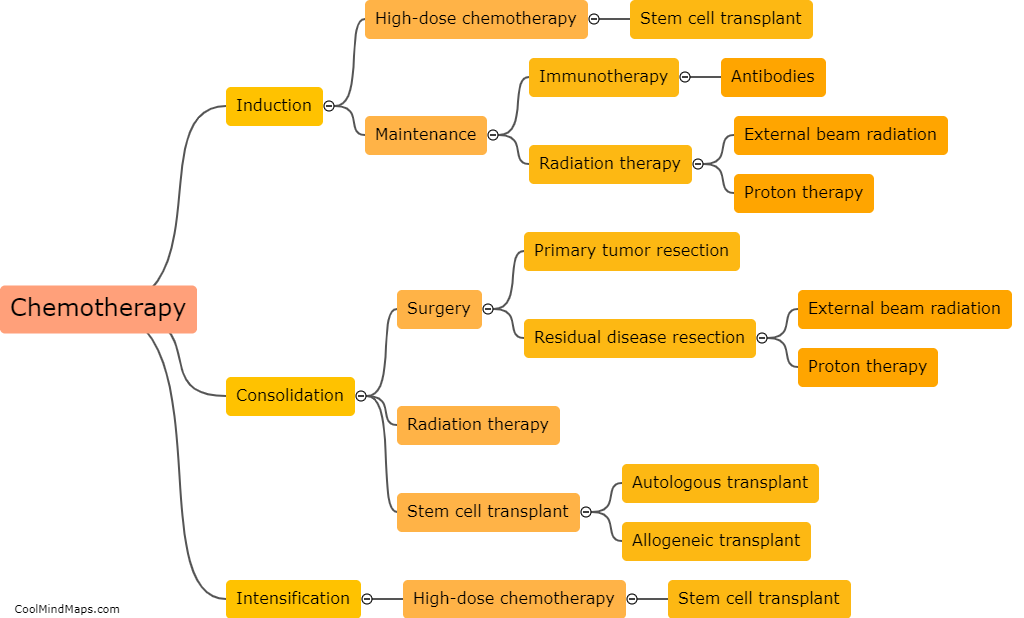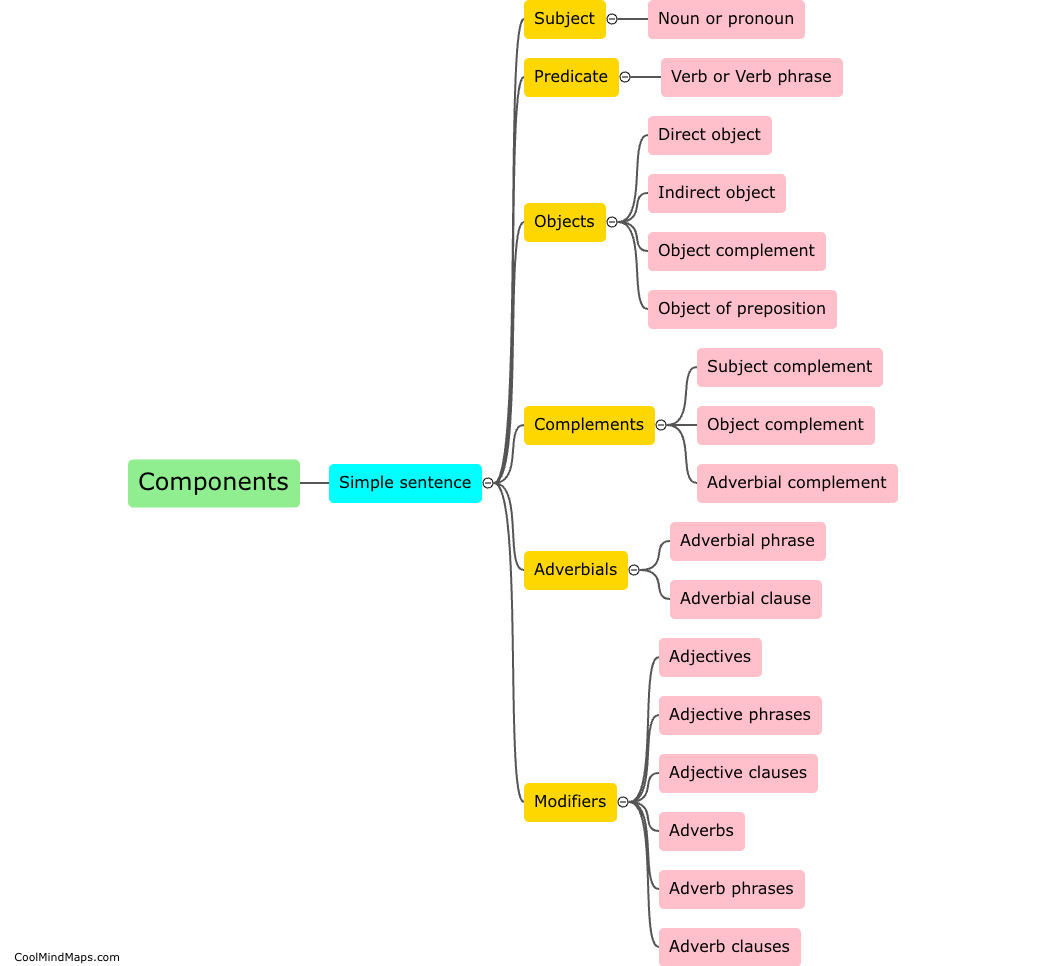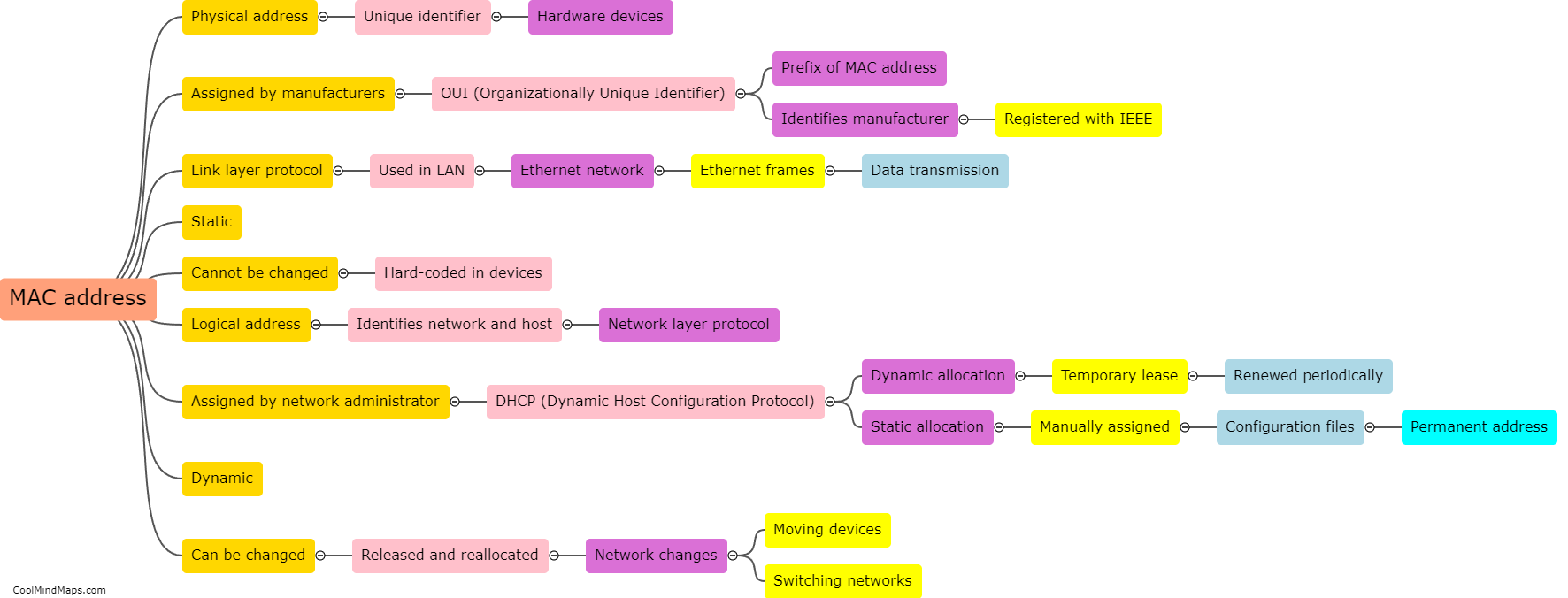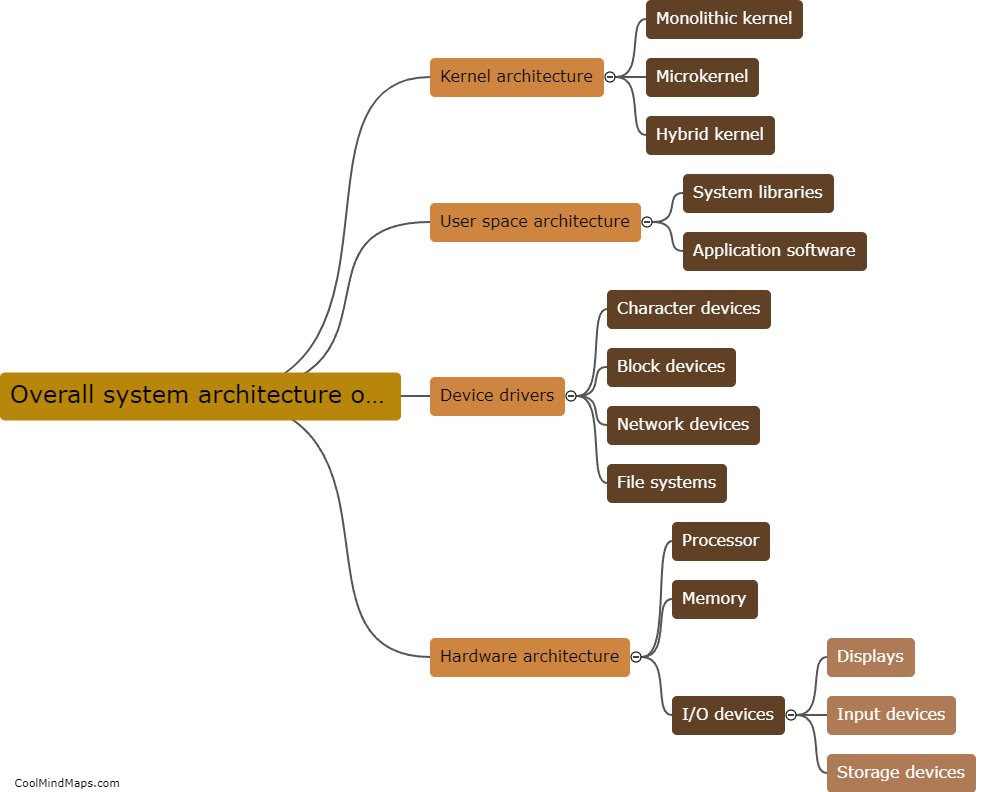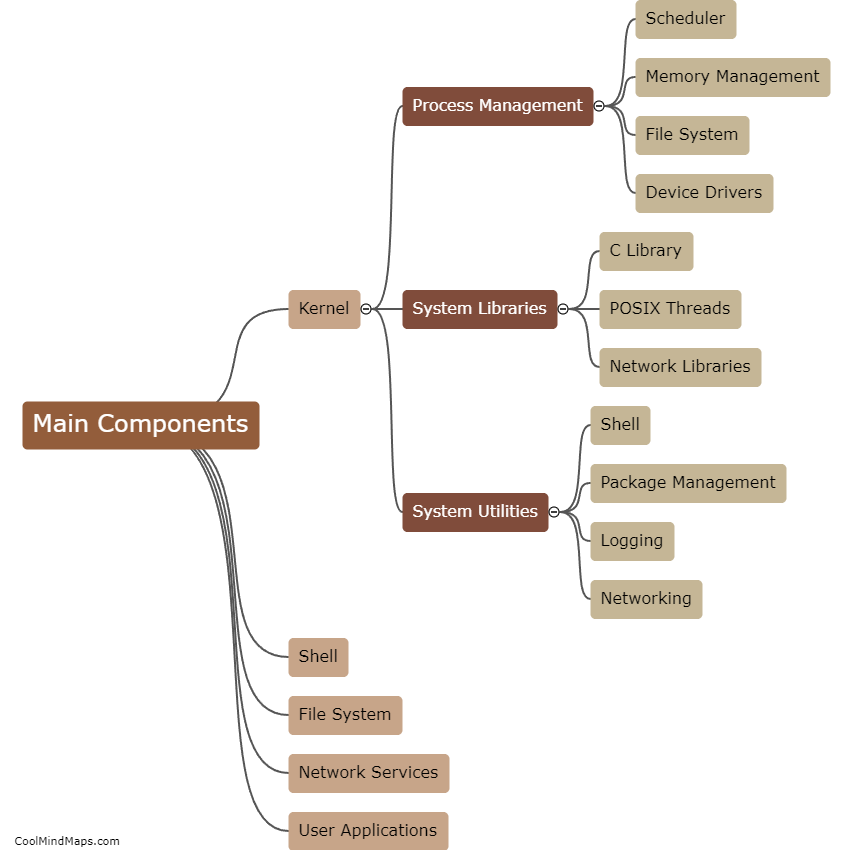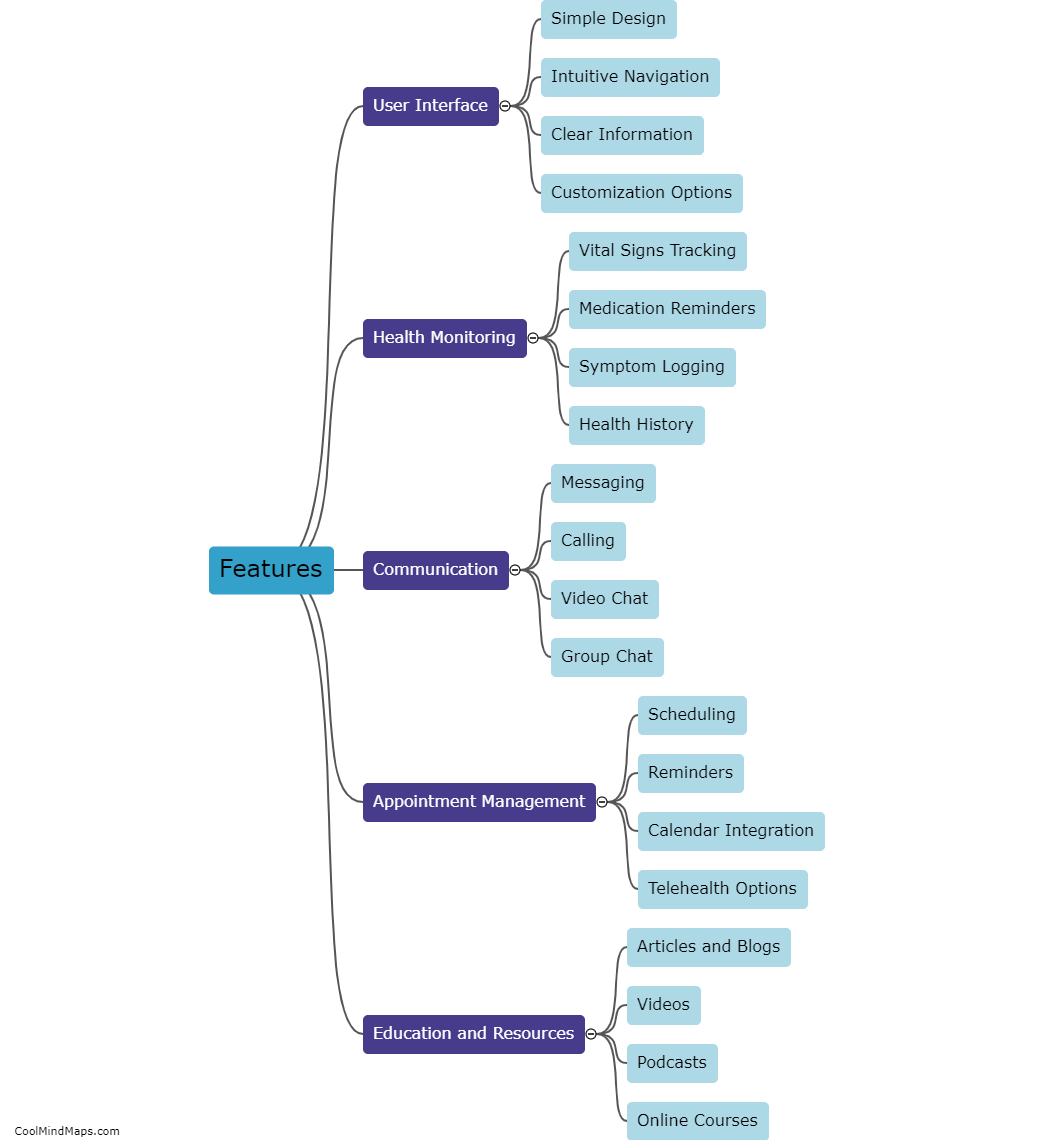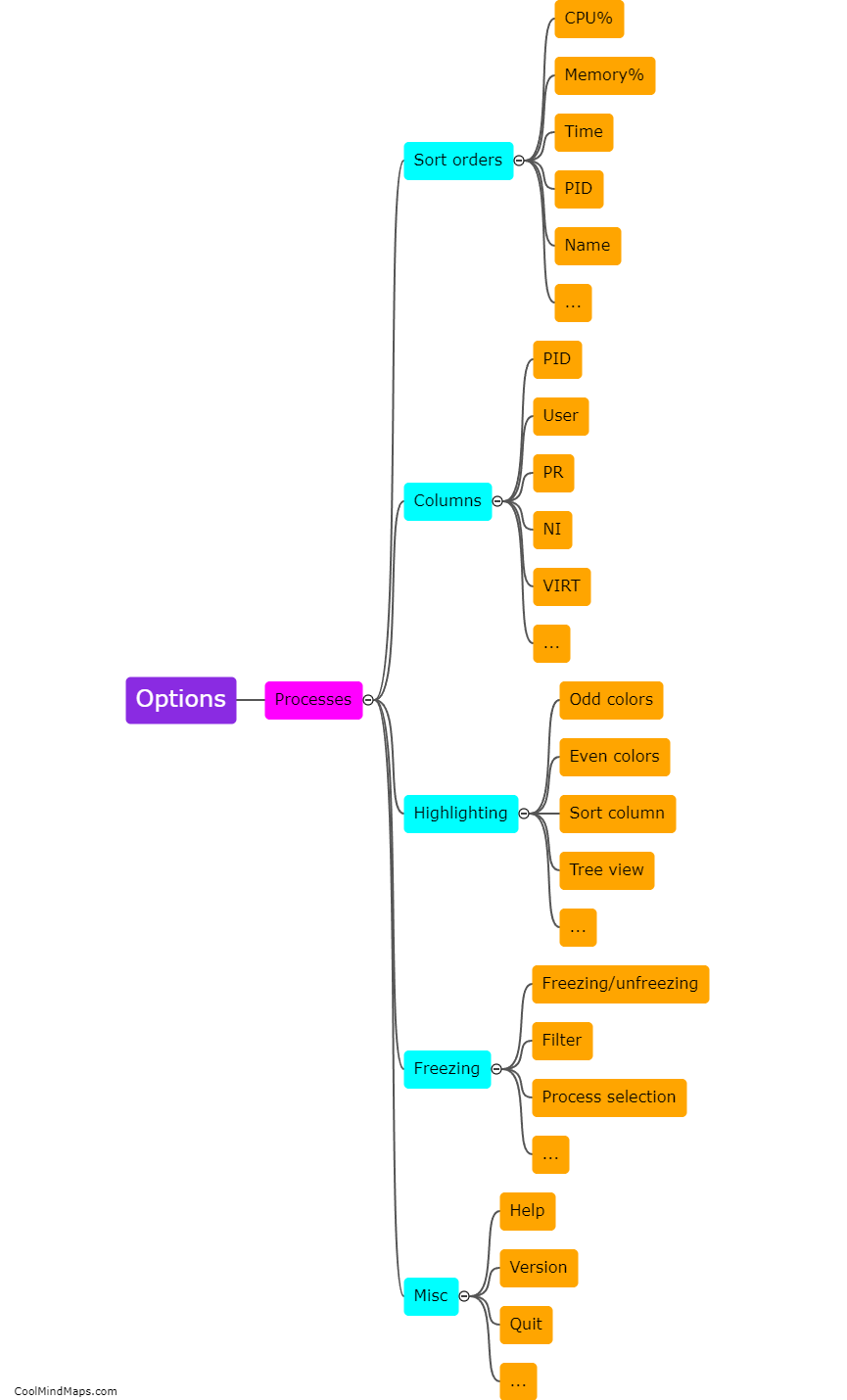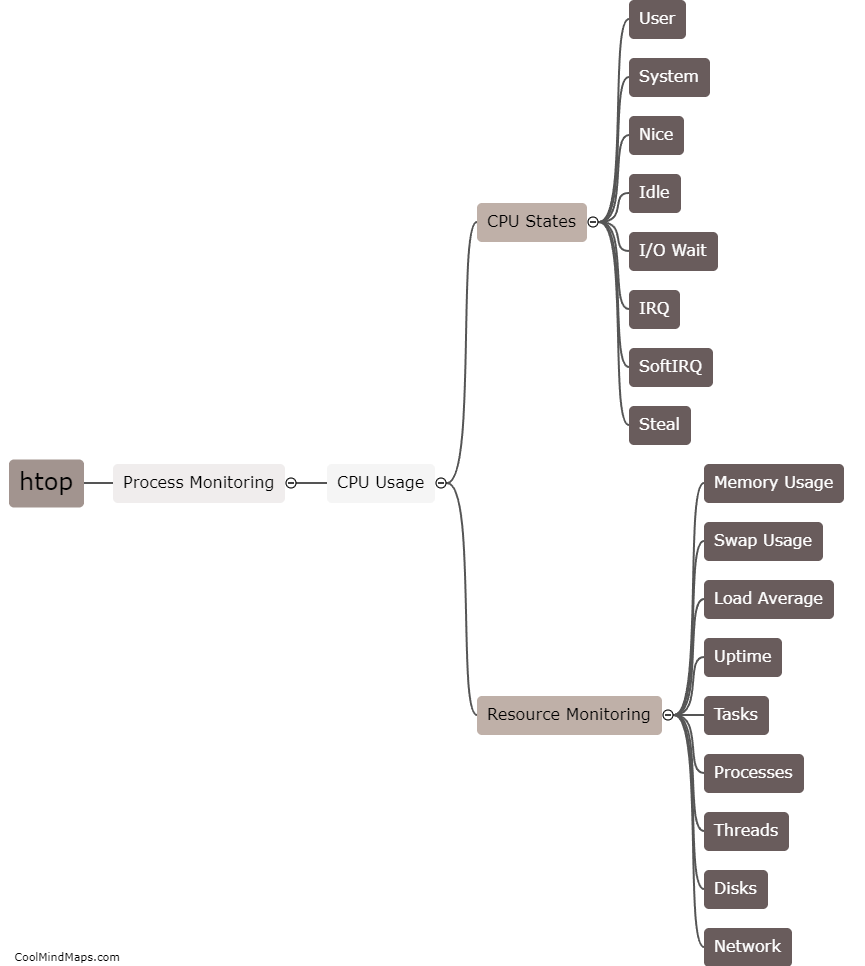What are the essential commands for LPIC Chapter 101.3?
The LPIC Chapter 101.3 focuses on essential commands for system management in Linux. Some of the essential commands covered in this chapter include ls, cp, mv, rm, head, tail, grep, find, chmod, chown, and tar. The command "ls" is used to list the files and directories in a specified location, while "cp" is used to copy files and directories to a different location. "Mv" is used for moving or renaming files and directories, and "rm" is used for deleting files. The commands "head" and "tail" are used for displaying the first or last few lines of a file, and "grep" is used for searching for a specific pattern within a file. "Find" allows users to search for files and directories based on different criteria, and "chmod" is used for changing permissions of files and directories. "Chown" is used for changing ownership of files and directories, and finally, "tar" is used for creating or extracting tarballs, which are compressed archives of files and directories. These essential commands provide the foundation for effectively managing and manipulating files and directories in a Linux system.
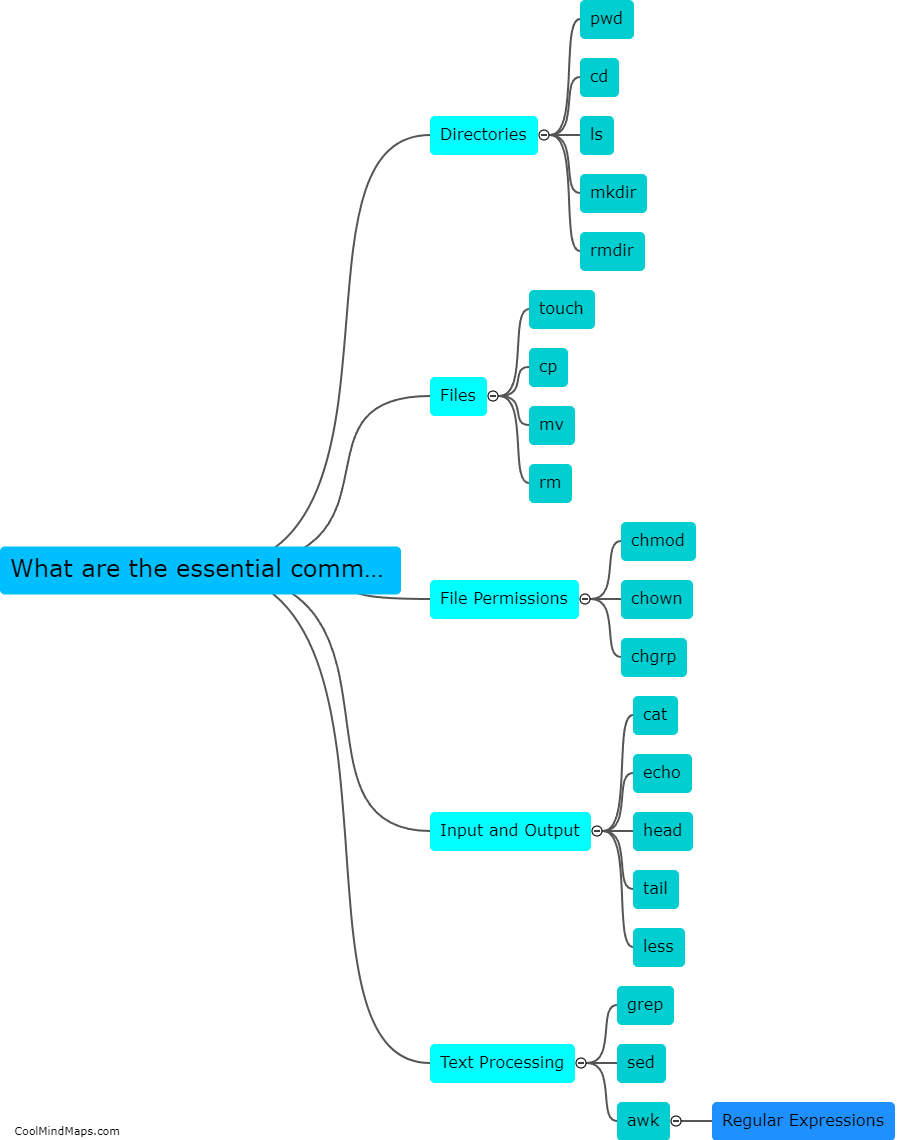
This mind map was published on 10 November 2023 and has been viewed 83 times.
